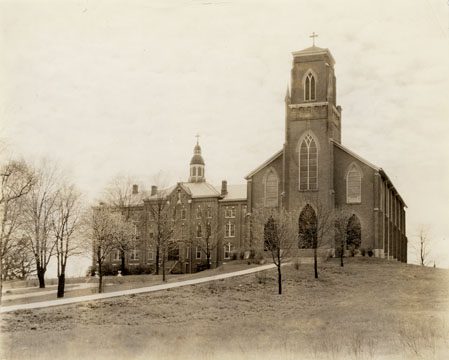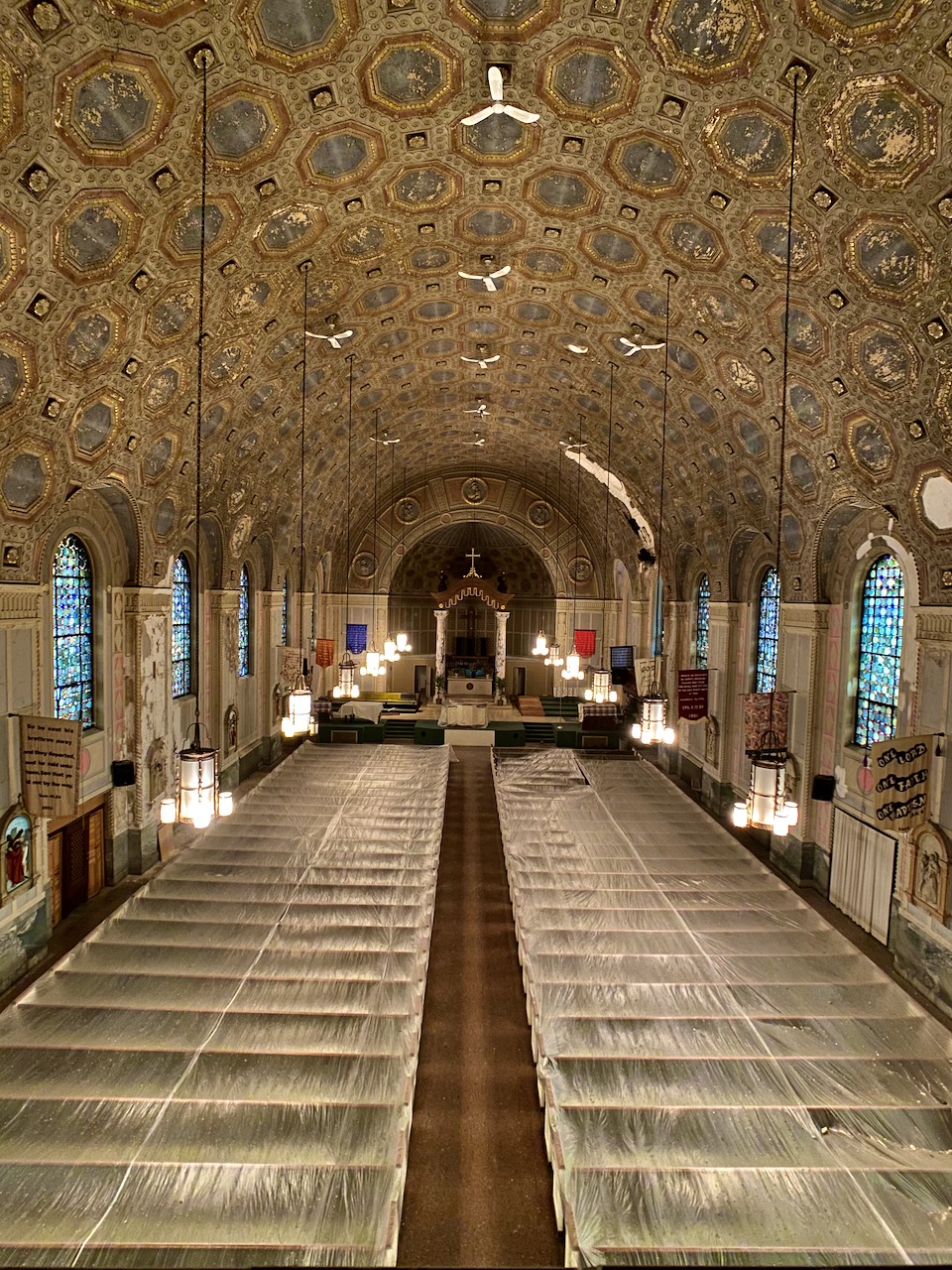A Resource to Logan Ohio Churches Offering Encouragement and Religious Guidance
A Resource to Logan Ohio Churches Offering Encouragement and Religious Guidance
Blog Article
Discovering Historical and Modern Churches for All Confidences
The exploration of historic and modern churches works as an extensive lens where we can check out the advancement of faith and neighborhood characteristics throughout societies. From the intricate styles of ancient basilicas to the minimal aesthetic appeals of modern worship rooms, these frameworks envelop the significance of their time and area. They are not simply areas of prayer; they are representations of social values and collective desires. As we take into consideration the importance of these sacred sites, one should consider exactly how they remain to shape interfaith discussion and neighborhood interaction in today's varied globe.
Architectural Designs With the Ages
As architectural expressions of spirituality, churches have actually developed considerably over the centuries, reflecting the varied theological and social influences of their times - Logan Ohio Churches. The building styles of churches are as differed as the belief systems they represent, each design embodying specific spiritual doctrines and area values
Very early Christian design emerged from Roman basilicas, identified by easy, longitudinal frameworks featuring a nave and aisles. As the Center Ages advanced, Gothic architecture held, noted by sharp arcs, ribbed vaults, and flying buttresses, which enabled larger tarnished glass windows that lit up interiors with divine light. The Renaissance period brought a revival of classical aspects, stressing percentage and balance, while Baroque design introduced intricate information and dramatic types, symbolizing the grandeur of spirituality.
In the 19th and 20th centuries, the increase of numerous movements, such as Crafts and arts and Innovation, reflected social modifications and a departure from traditional types. Today, modern churches frequently mix contemporary products and cutting-edge layouts, welcoming sustainability and area engagement. This rich tapestry of architectural styles shows the recurring discussion in between faith and design, showcasing how churches remain to adapt to the spiritual requirements of varied populaces around the world.
Famous Historic Churches

One more impressive example is the Notre-Dame Sanctuary in Paris, commemorated for its French Gothic design. Its complex façade and magnificent discolored glass windows mirror centuries of devotion and artistry, making it a sign of both confidence and strength, specifically after its recent repair following the ravaging fire in 2019.
In the Americas, the historical Goal San Juan Capistrano in California showcases Spanish colonial style, highlighting the very early Catholic goals that played a crucial function in the region's social development.

Furthermore, the Hagia Sophia in Istanbul, initially built as a basilica, stands for a blend of Christian and Islamic heritage, showcasing the rich tapestry of history that churches typically embody. Each of these historic churches not just acts as a place of praise but additionally as a social landmark, protecting the narratives of varied neighborhoods across time.
Modern Church Innovations
Modern churches are increasingly welcoming cutting-edge designs and modern technologies to enhance the worship experience and foster area engagement. These innovations materialize in various forms, from architectural developments to digital combination. Several modern churches include open, adaptable rooms that can be conveniently reconfigured to fit varied tasks, such as solutions, social celebrations, and curricula.
Incorporating modern technology is vital in modern-day church layout. High-quality audio-visual systems, online streaming capacities, and interactive displays allow congregations to link not just within their walls yet likewise with a broader target market online. This electronic outreach has actually ended up being vital for maintaining community connections, particularly in an age where many individuals look for spiritual links past traditional settings.
Sustainable check my source layout methods additionally play an important duty in modern-day church technologies. Several establishments are opting for green products and renewable resource sources, showing a commitment to ecological stewardship that resonates with congregants.
Moreover, the assimilation of art and imagination right into prayer rooms, via installations, multimedia, and murals presentations, serves to improve the spiritual ambience, making the experience extra immersive. These innovations collectively mirror a change in the direction of an extra inclusive and vibrant approach to praise and community life.
Area Impact of Churches
Churches play a vital function in shaping and boosting areas, often stepping up to attend advice to regional requirements and challenges. Past their spiritual features, these organizations regularly take part in social outreach and provide important solutions that promote community communication. Lots of churches run food financial institutions, shelters, and therapy solutions, resolving problems such as destitution, being homeless, and psychological wellness.
Moreover, churches frequently work as celebration places for area events, assisting in discussion and unity amongst varied teams. By holding educational programs, workshops, and cultural occasions, they motivate individual growth and cumulative empowerment. Their interaction in local campaigning for efforts intensifies the voices of marginalized neighborhoods, contributing to social justice efforts.
Additionally, churches usually collaborate with neighborhood companies, enhancing their impact via partnerships that integrate sources and knowledge. This interconnectedness strengthens neighborhood ties and advertises a sense of belonging among citizens.
Fundamentally, churches are not simply locations of worship; they are indispensable to the social fabric of their neighborhoods. Their multifaceted contributions-- spiritual guidance, social services, and neighborhood advocacy-- play an important function in fostering strength and positive adjustment within society.
Seeing Churches Around the World
When discovering the diverse landscapes of spirituality, seeing churches around the globe uses a distinct home window into the social and imaginative expressions of confidence. Each church works as a testament to the history and worths of the area it stands for, reflecting regional traditions and building designs.
From the magnificence of St - Logan Ohio Churches. Peter's Basilica in Vatican City to the minimal beauty of click for source Tokyo's St. Mary's Sanctuary, these sacred spaces embody a rich tapestry of human experience. The elaborate tarnished glass of Chartres Cathedral in France tells scriptural stories, while the dynamic murals of the Ethiopian Orthodox churches depict the nation's distinct spiritual heritage
Along with showcasing creative proficiency, churches commonly work as centers of neighborhood and social interaction, organizing events that strengthen bonds amongst congregants. Numerous likewise supply possibilities for interfaith dialogue, promoting understanding and respect amongst different idea systems.
Taking a trip to these churches allows site visitors to value the global styles of hope, love, and compassion that transcend cultural obstacles. Whether one identifies with a particular faith or otherwise, the experience of checking out these spiritual websites enhances our understanding of the human mission for significance and connection.
Final Thought

The expedition of historic and modern-day churches offers as a profound lens via which we can take a look at the advancement of faith and neighborhood characteristics throughout societies. Today, contemporary churches usually blend ingenious designs and modern-day products, accepting sustainability and community interaction.Throughout history, countless churches have arised as iconic spots, each informing an one-of-a-kind tale of creativity, belief, and area.Modern churches are progressively accepting innovative layouts and technologies to enhance the praise experience and foster community engagement.In addition, churches commonly serve as event places for community events, promoting discussion and unity amongst varied teams.
Report this page